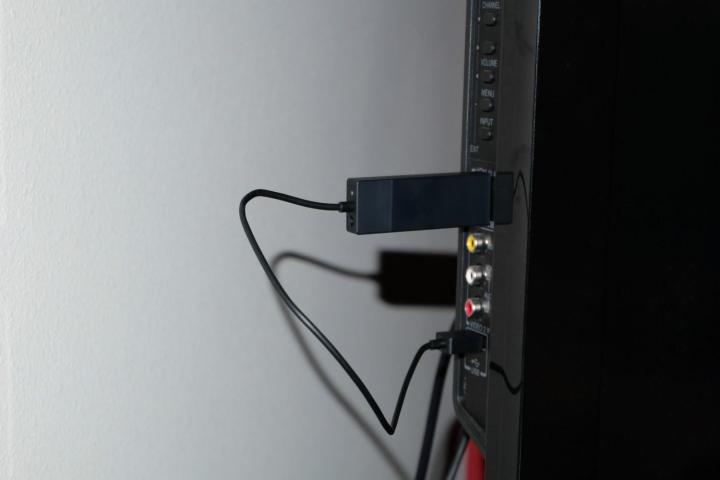
The adapter requires that your device is enabled with Miracast technology to work. If it is, and you want to project whatever is on your PC to your HDTV, all you have to do is plug the adapter into your TV via its USB and HDMI connectors.
Your TV should then show up as a connect-able device in Windows 8.1. If the adapter works as described, this could be a great way to run a meeting, share photos from a recent vacation, or host a movie night by streaming a video from your laptop to your TV.
The adapter also works with projectors and monitors as well. However, as we mentioned, you need a Miracast-compatible Windows 8.1 machine, or a Miracast-compatible Android device running version 4.2.1 of Google’s mobile OS to mirror stuff. It doesn’t appear to be compatible with iOS, or Windows 7.
Also, the cable separating the USB and HDMI ports on the Wireless Display Adapter doesn’t appear to be too lengthy. So, if you want to stream stuff to your TV using this adapter, the HDMI and USB connections on your TV will have to be pretty close together. The USB port provides power to the adapter, so it has to be plugged in order for the whole setup to work.
You can pre-order the Microsoft Wireless Display Adapter right now from the company’s official site for $59.95. The adapter will begin shipping October 31.
Check out a video of the adapter in action below, courtesy of Microsoft, and YouTube.


